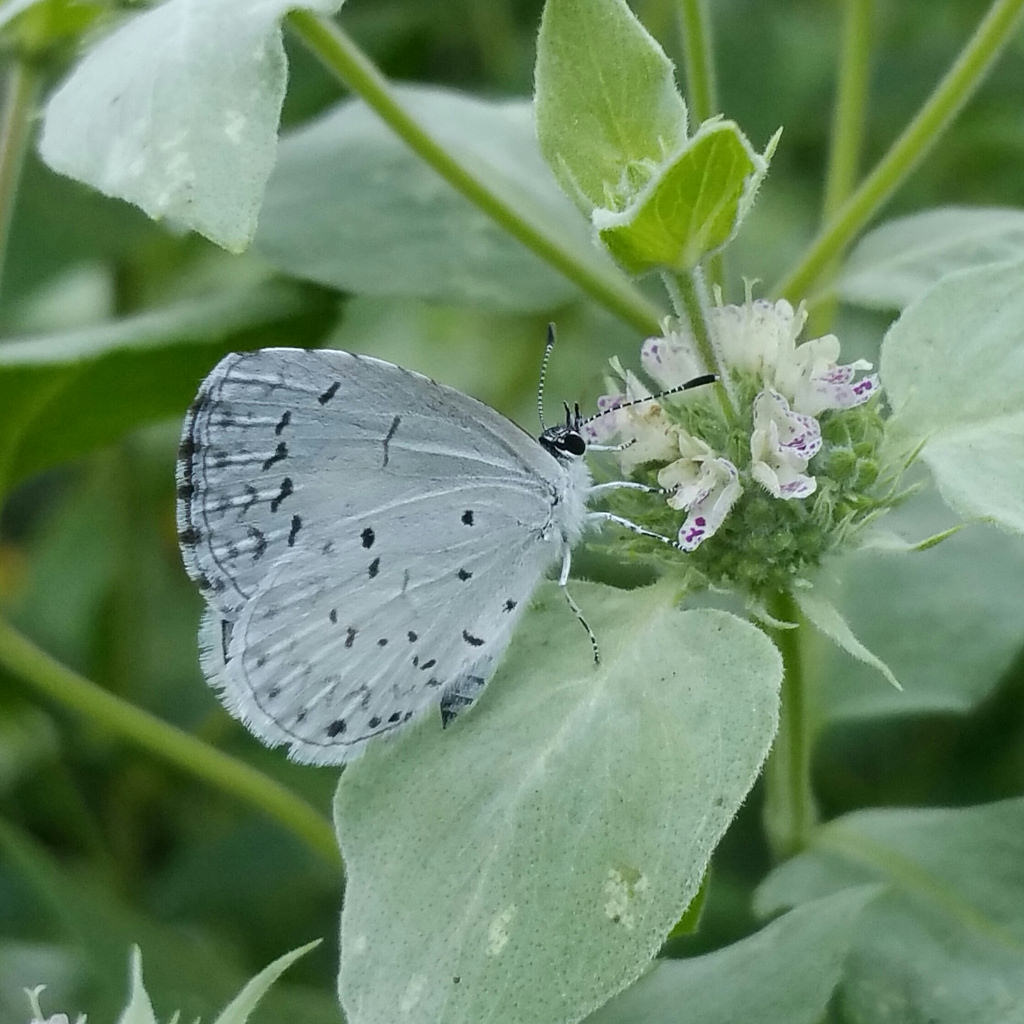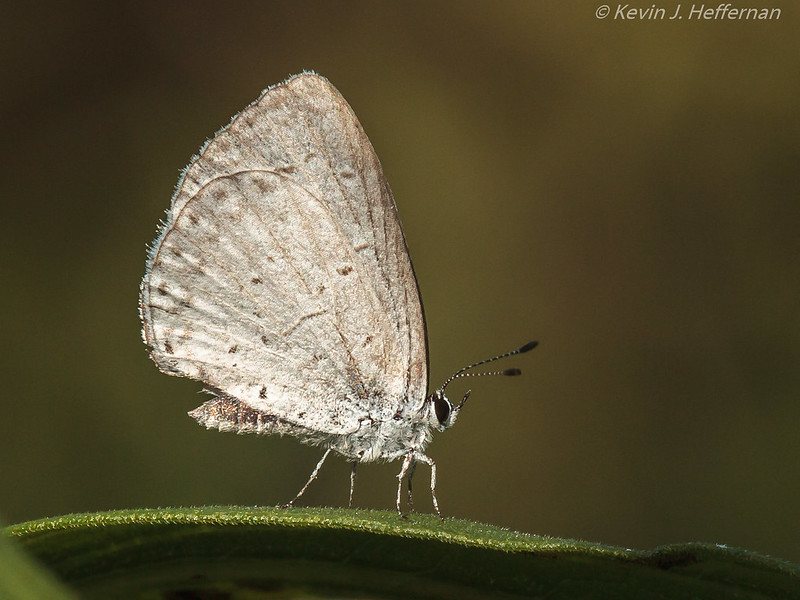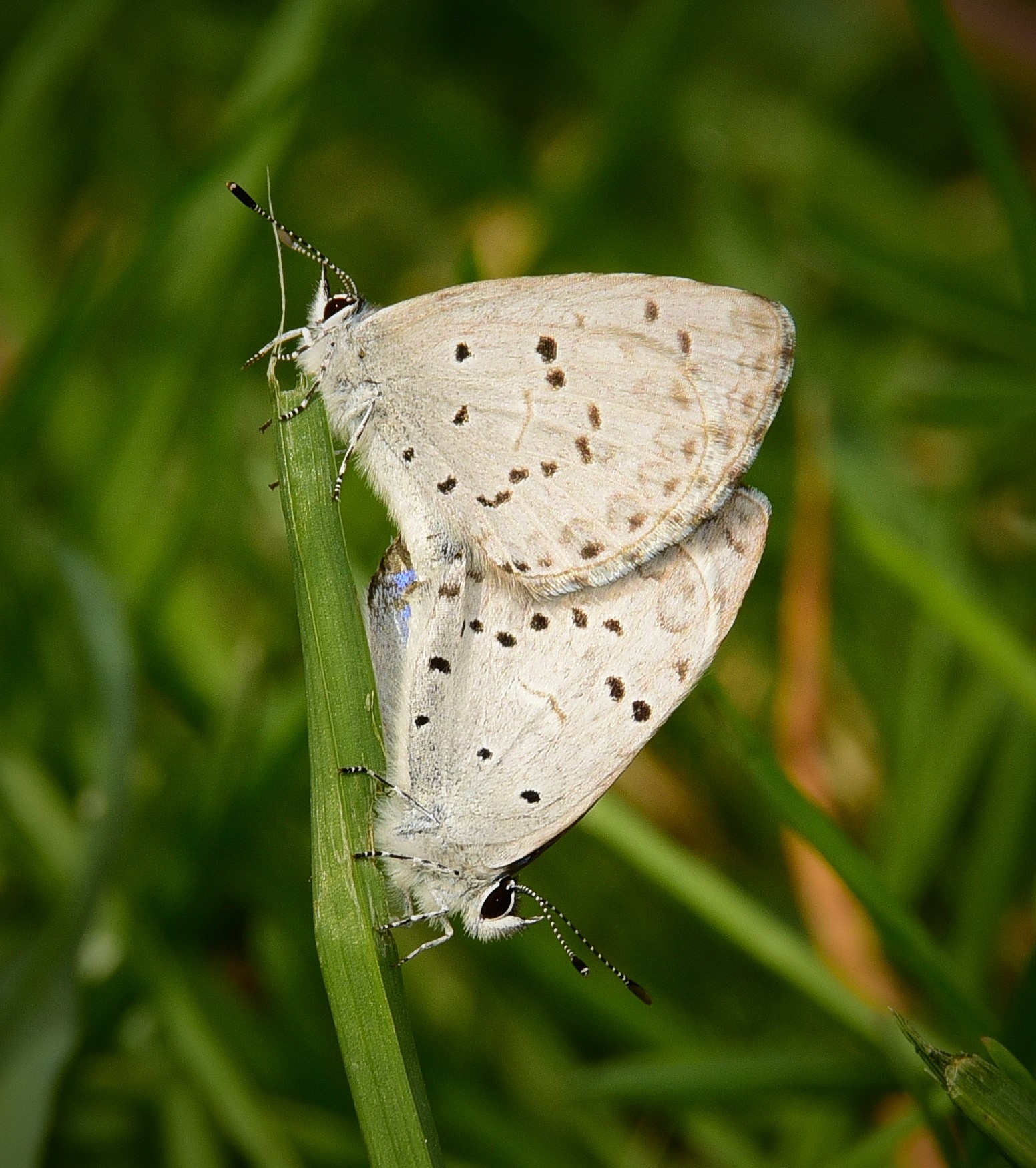Map Snapshot

























965 Records
Status
Summer Azure (Celastrina neglecta) is part of the treacherous azure complex, which contains a number of small blue butterflies of the genus Celastrina, and some of the most challenging butterfly species to identify in the field. In spite of its name, Summer Azure actually begins flying in late March in Maryland, and continues, through multiple broods, into October (Butterflies of Maryland: A Biological Summary and Checklist by Lynn Davidson & Richard Smith).
Description
This species is very similar to Spring Azure (Celastrina ladon) but differs subtly in scale pattern, and males possess androconia scales on the forewings, which ladon lacks. The spring and summer forms of neglecta ('Summer') differ somewhat in the appearance of the underside, with spring individuals more strongly marked with black, while later broods are much whiter. The upperside of neglecta is brighter blue, without the faint milky or violet cast shown by Spring Azure. There is a wealth of information on this confusing complex on Rick Borchelt's blog (https://leplog.wordpress.com/).
Relationships
Uses viburnums, shrubby dogwoods (Cornus sp.), Wingstem (Verbesina alternifolia), American Holly (Ilex opaca), Black Baneberry (Actaea racemosa), and many other plants as larval hosts.
Seasonality Snapshot
Source: Wikipedia
| Summer azure | |
|---|---|

| |
| Female, upperside | |

| |
| C. n. neglecta, Ottawa, Ontario, Canada | |
| Scientific classification | |
| Domain: | Eukaryota |
| Kingdom: | Animalia |
| Phylum: | Arthropoda |
| Class: | Insecta |
| Order: | Lepidoptera |
| Family: | Lycaenidae |
| Genus: | Celastrina |
| Species: | C. neglecta
|
| Binomial name | |
| Celastrina neglecta (W.H. Edwards, 1862)
| |
Celastrina neglecta, the summer azure, is a butterfly of the family Lycaenidae. It is found in North America. Layberry, Hall, and Lafontaine, in The Butterflies of Canada, describe the species:
The upper surface is pale blue with an extensive dusting of white scales, especially on the hindwing. In some females the blue is almost entirely replaced by white with a small amount of blue near the wing bases. Females have a broad blackish-grey band on the outer third and costa of the forewing. The underside is chalky white to pale grey with tiny dark grey spots and a zigzagged submarginal line on the hindwing.[1]
Wingspan is 23 to 29 mm (0.91 to 1.14 in).
Known host plants for the caterpillars include New Jersey tea, dogwoods, and meadowsweet. Adults nectar from many plants including vetch, yarrow, meadowsweet, rough-fruited cinquefoil, Queen Anne's lace, wild oregano (Origanum vulgare), narrow-leaved mountain mint, Joe-pye weed, and goldenrods.[2]
The summer azure occurs across most of eastern and central United States as well as southern Canada from Nova Scotia to southern Saskatchewan. Adults fly from mid-June until early October with two or three generations in the south.[3]
The taxonomic status of this butterfly, originally described as Lycaena neglecta Edwards, 1862, has been in flux over the years. It was at one time treated as a synonym of Celastrina argiolus lucia (Lycaena lucia Kirby, 1837).[4]
Similar species
[edit]- Spring azure (C. ladon)
- Cherry gall azure (C. serotina)
- Holly azure (C. idella)
- Lucia azure (C. lucia)
References
[edit]- ^ Layberry, Ross. A., Peter Wl. Hall, and J. Donald Lafontaine. The Butterflies of Canada. University of Toronto Press, 1998. Reproduced with permission at Summer Azure, Canadian Biodiversity Information Facility
- ^ "Summer Azure (Celastrina neglecta)". Vermont Center for Ecostudies. Retrieved May 4, 2023.
- ^ Jim P. Brock and K. Kaufman. Kaufman Field Guide to Butterflies of North America, New York, NY:Houghton Mifflin, 2003.
- ^ Eliot, J.N.; Kawazoe, A. (1983). Blue butterflies of the Lycaenopsis group. London.
{{cite book}}: CS1 maint: location missing publisher (link)
External links
[edit]- Summer azure, Butterflies and Moths of North America






















